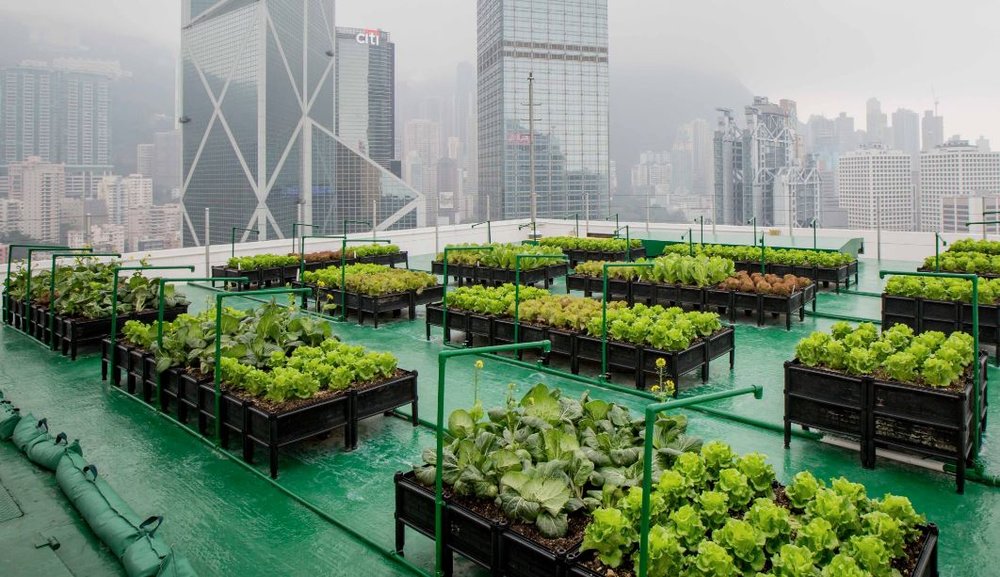The escalating climate crisis has intensified the need for spatial and resource-related adaptability. This has led to a compelling case for farming practices situated within city parameters. Urban areas are responsible for consuming approximately 79% of the total global food produced, as per the UN’s Food and Agriculture Organization (FAO). However, producing and transporting large quantities of food needed for major metropolitan areas can seriously affect the climate.
Research in 2022 discovered that “food miles”—the distance covered from a farm to a consumer’s plate—constitute one-fifth of all food-related greenhouse gas emissions, an amount significantly higher than earlier approximations. Disturbing statistics include 1998 research from Chicago, showing that on average, produce transported by truck covered 1,518 miles. Another study examining fresh items brought into Ontario, Canada, recorded almost double the distance.
Urban agriculture could provide solutions to these problems. Let’s look at some examples of urban agriculture and the potential challenges to implementing it.
Evaluating Different Models of Urban Agriculture
Various types of urban farming are on the rise, such as vertical farms, edible walls, indoor greenhouses, and open-air rooftops. However, the environmental benefits each model offers remain an area of uncertainty. Questions remain regarding the optimal deployment locations and the beneficiaries of these practices.
Cities like Paris are becoming home to urban farms like Nature Urbaine and many more, raising their numbers to the dozens. Numerous French cities have also adopted this local food production approach, touted for its potential to reduce resource usage, carbon emissions, and urban heat islands, while strengthening community bonds and enhancing climate resilience and food security.
Nature Urbaine, the largest urban rooftop farm in Europe, was inaugurated in the spring of 2020. Its area is approximately 14,000 square meters or 150,000 square feet, nearly equivalent to the Stade de France’s playing field. The farm, sans pesticides or soil, can yield over 10 tons of fruits and vegetables each season. As per Agripolis, its creator, the hydroponic and aeroponic systems utilized here are computer-controlled and produce 62% fewer CO2 emissions while using 80% less water compared to a traditional farm for a similar output. The farm received recognition from Ecocert, a French certification body, as the first urban farm to achieve carbon offset.
Across Paris, Agripolis operates five more urban farms on hotel rooftops, a municipal pool, and a water purification station, with additional farms in cities like Marseille, Lyon, and Toulouse. Paris also boasts a mushroom farm within a former parking lot and a 7,000-square-meter farm with a data center-heated greenhouse.
Gotham Greens, another successful urban farming venture, launched a 15,000-square-foot rooftop greenhouse in Brooklyn in 2011 and has since expanded to 13 farms across nine states. The Javits Convention Center in Manhattan recently had a one-acre fruit and vegetable farm installed on its green roof.
France’s National Efforts for Urban Renewal and Agriculture
As part of the proactive efforts to prepare for potential shocks to the local, regional, and global food supply chain, Paris launched the Les Parisculteurs project in 2016. This initiative has led to a significant increase in the city’s farming land, from 11 hectares in 2014 to 30 hectares now.
Additionally, plans are being drafted for a revamped Paris Green Belt initiative, along with the additional development of 3,000 hectares of farming land in Greater Paris by 2030. Collaboration is also ongoing with AgroParisTech to help farmers adapt their practices to the changing climate.
France’s National Agency for Urban Renewal launched the Fertile Neighborhoods project in 2020, aimed at establishing 100 urban farms across the country, primarily in underprivileged communities. Despite challenges related to the pandemic, 95 of the 98 launched projects are still ongoing, and an impact study is in progress.
Possible Limitations and Hurdles in Urban Agriculture
Despite these success stories, the commercial potential of such urban farming initiatives may be limited. A 2018 study estimated that urban agriculture could produce up to 180 million metric tons of food annually, meeting about 10% of the global demand for certain crops. The Paris Urbanism Agency calculated that to produce enough fruits and vegetables for Paris’s population and non-resident workforce would require land 1.5 times the city’s size.
Vertical farming is facing significant hurdles, notably high operational costs, and surging energy prices, mainly due to the reliance on energy-intensive LED lighting systems. Berlin-based Infarm recently announced plans to lay off 500 employees, while Kentucky’s AppHarvest expressed doubts about its future viability.
Optimism for the Future of Urban Agriculture
Urban agriculture has the potential to reduce climate impact and fulfill sustainable food production needs in an increasingly urbanized world. Despite challenges, such as scalability and operational costs, urban farming has shown promise in reducing emissions, enhancing community engagement, and improving food security. The perseverance of cities like Paris suggests that a greener, more self-sustaining urban future is within reach, made possible by technological advancements and a global commitment to sustainable practices.

